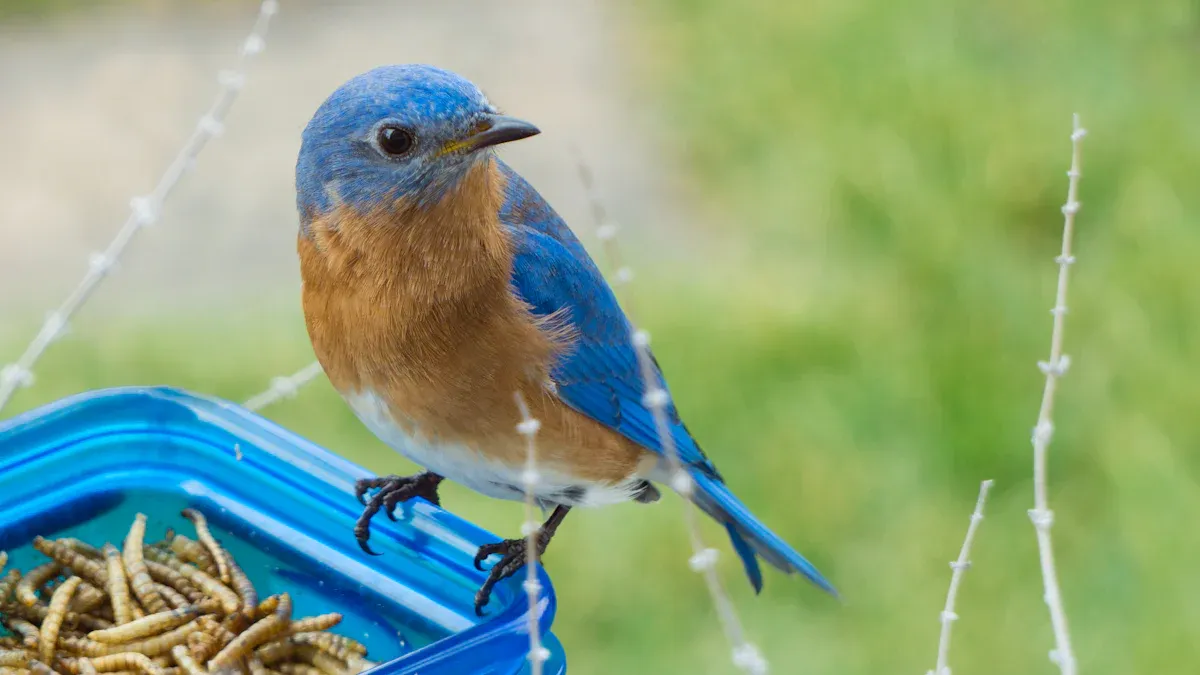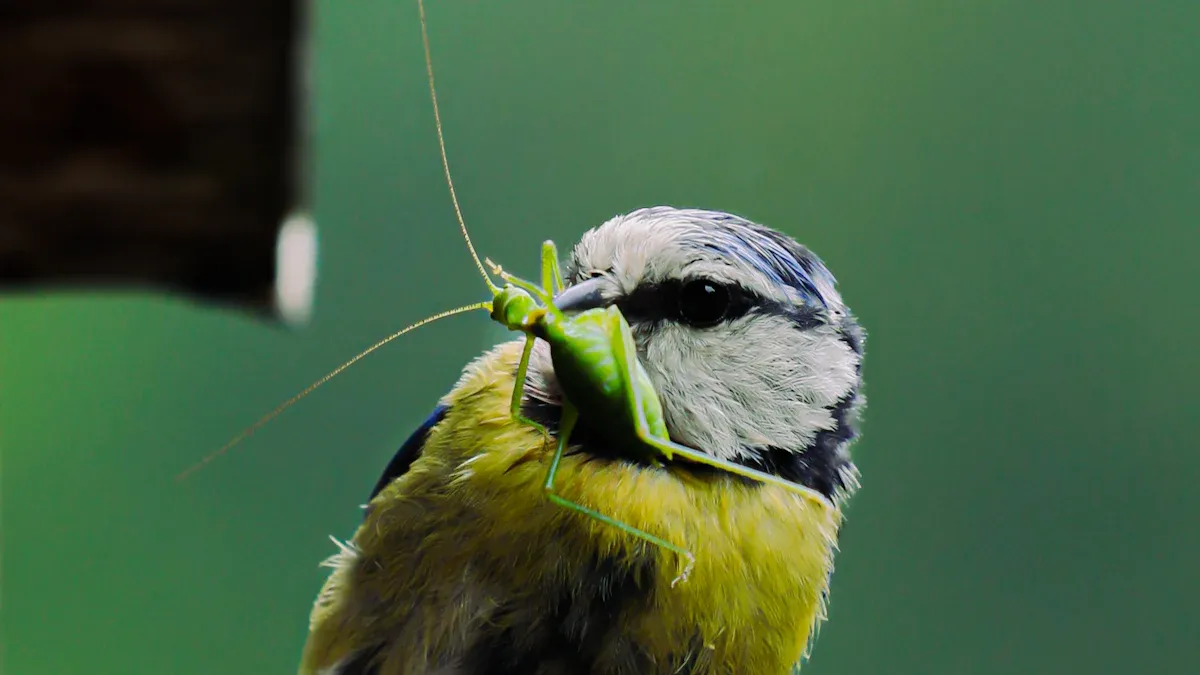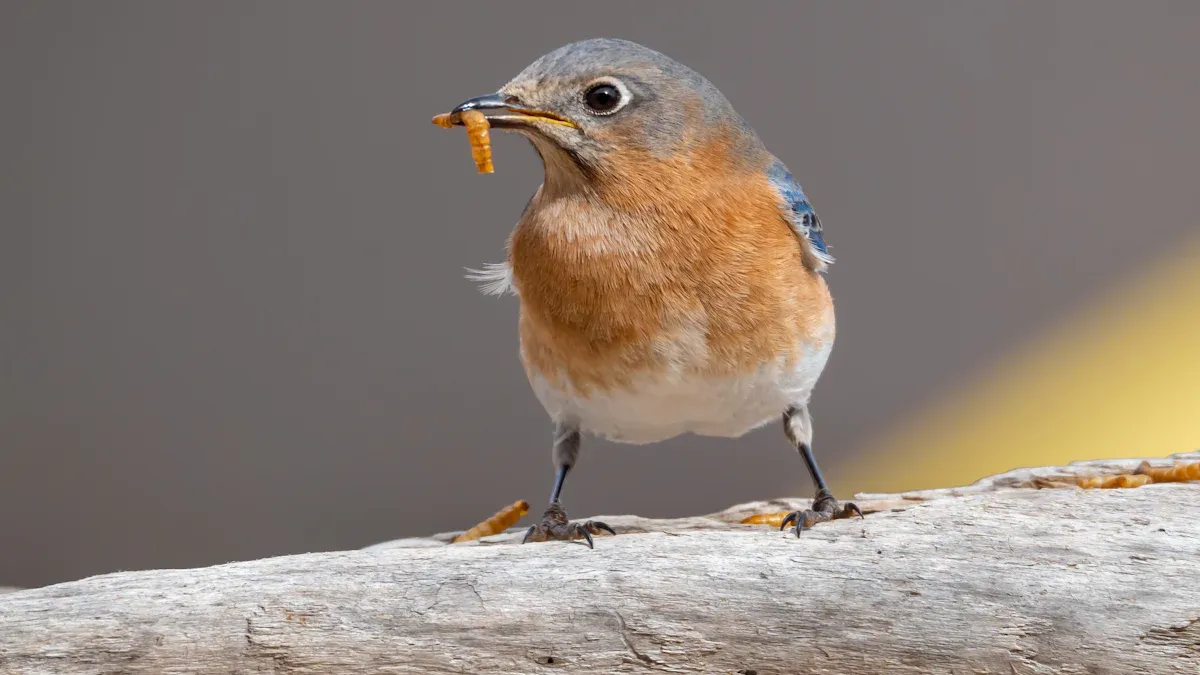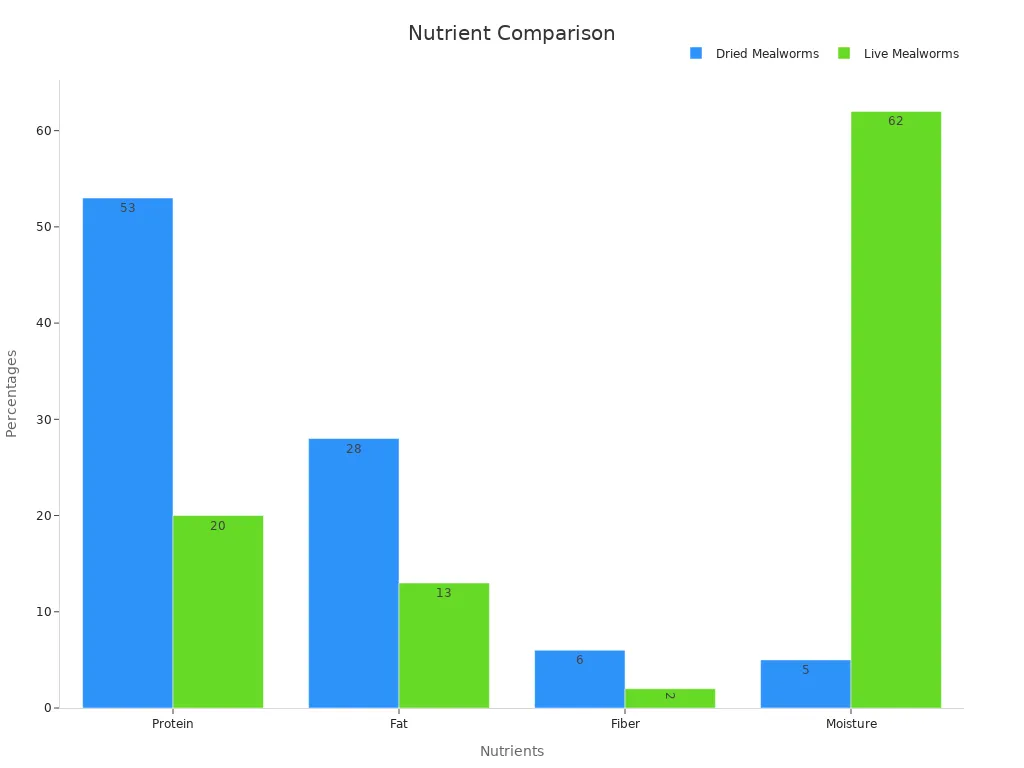
Mealworms bird food packs a punch with up to 74% protein and a solid mix of essential amino acids. Birds get more energy, brighter feathers, and better health from these nutrient-rich snacks. Garden birds, robins, and even ducks enjoy mealworms, making them an easy, natural choice for daily feeding.
Key Takeaways
- Mealworms bird food provides high protein, essential vitamins, and minerals that help birds grow strong, stay energetic, and keep their feathers bright.
- Both live and dried mealworms support bird health, but dried mealworms are easier to store and can be soaked to make them softer for smaller birds.
- Feeding mealworms daily, especially during nesting or cold seasons, boosts birds’ immunity and energy, helping them thrive in your garden.
Why Mealworms Bird Food Is a Nutritional Powerhouse

What Are Mealworms and How Are They Used in Bird Food
Mealworms are the larval stage of the darkling beetle, Tenebrio molitor. They look like small, wiggly worms and grow to about 1 to 1.5 inches long. Farmers raise mealworms on grains like wheat or oat bran, which helps them grow quickly and stay healthy. People harvest mealworms during their larval stage, when they are packed with nutrients.
Bird lovers often use mealworms bird food to attract a wide range of wild and pet birds. You can offer mealworms live or dried. Live mealworms move around, which makes them extra tempting for birds like robins, blue tits, and blackbirds. Dried mealworms are easy to store and handle, and they keep all the protein without the wriggle. Many people sprinkle dried mealworms bird food on feeding stations or mix them with seeds to give birds a tasty, nutritious treat.
Tip: Dried mealworms bird food is perfect for anyone who wants to feed birds but doesn’t want to handle live insects.
Here’s a quick look at how mealworms are prepared for bird food:
| Form | How It’s Made | Benefits for Birds |
|---|---|---|
| Live | Harvested fresh, kept moist | Juicy, high moisture, very tasty |
| Dried | Freeze-dried or oven-dried | Easy to store, concentrated protein |
Key Nutrients in Mealworms Bird Food
Mealworms bird food stands out because it is loaded with important nutrients. Birds need these nutrients to stay strong, grow new feathers, and keep up their energy. Let’s break down what makes mealworms so special:

| Nutrient Component | Range / Values | Notes |
|---|---|---|
| Protein Content (Dry Matter basis) | 40.2% – 71.2% | Varies by diet and conditions |
| Fat Content (Dry Matter basis) | 6.1% – 43% | High energy for birds |
| Amino Acids (g/kg DM) | Glutamic acid: 38 – 125.3; Aspartic acid: 5 – 97.4; Alanine: 30.5 – 100.9; Leucine: 22 – 109 | Supports muscle and feather growth |
| Fiber Content | ~3.2% | Helps digestion |
| Moisture Content | 62.44% (live) | Juiciness for live mealworms |
| Minerals | Iron, zinc, copper, manganese, iodine, selenium | Supports health and immunity |
| Vitamins | B1 (thiamin), B12, A, D, E | Essential for metabolism and immune system |
- Mealworms bird food also contains chitin and chitosan, which help birds fight off germs and boost their immune system.
- Carotenoids in mealworms act as precursors to vitamin A and help birds keep their feathers bright and their immune system strong.
Birds love mealworms bird food because it gives them a natural source of protein, fat, and vitamins that are hard to find in the wild, especially in winter.
How Mealworms Bird Food Supports Bird Health
Mealworms bird food does more than just fill a bird’s belly. It helps birds in many ways, especially during tough times like breeding season or cold weather. Here’s how:
- Protein Power: Birds need protein to build muscles, grow new feathers, and feed their chicks. Mealworms bird food gives them a big boost, especially when bugs are hard to find outside.
- Energy for Every Season: The fat in mealworms bird food gives birds the energy they need to fly, stay warm, and care for their young.
- Better Immunity: Chitin and chitosan in mealworms help birds fight off sickness. Studies show that these nutrients can improve blood globulin levels, making birds more resistant to disease.
- Vitamins and Minerals: Iron, zinc, selenium, and B-vitamins in mealworms bird food help birds stay healthy, keep their feathers shiny, and support their metabolism.
- Brighter Feathers: Carotenoids in mealworms bird food help birds keep their feathers colorful and strong. Birds can’t make carotenoids on their own, so they need to get them from their food.
Many bird species, like robins, blue tits, and starlings, thrive when they have access to mealworms bird food. Garden birds especially benefit during spring and winter, when natural protein sources are low.
Mealworms bird food is a smart choice for anyone who wants to support wild or pet birds. It’s easy to use, packed with nutrients, and loved by birds of all kinds.
How to Feed Mealworms Bird Food for Maximum Benefits

Which Birds Benefit Most from Mealworms Bird Food
Many birds enjoy mealworms bird food, but some species benefit more than others. Robins, bluebirds, wrens, and chickadees love these protein-rich snacks. House sparrows and starlings also flock to feeders with mealworms. During nesting season, parent birds feed mealworms to their chicks, helping them grow strong and healthy. Even ducks and wildfowl at local ponds appreciate mealworms as a healthier alternative to bread.
Dried vs. Live Mealworms Bird Food
Bird owners often wonder if dried or live mealworms are better. Live mealworms offer fresh proteins, fats, and vitamins. They need refrigeration and have a short shelf life. Dried mealworms bird food is easy to store and packs more protein by weight. Soaking dried mealworms in water makes them juicier and more appealing to birds, especially nestlings. Both forms support bird health, but dried mealworms are more convenient for most people.

Serving Tips and Preparation
For best results, serve mealworms bird food in a shallow dish or a special feeder. Place feeders near shrubs or trees to help birds feel safe. Soak dried mealworms in warm water for 10-15 minutes before feeding to nestlings. This prevents dehydration and makes them easier to eat. Offer mealworms in the morning when birds are most active. Clean feeders often to keep food fresh.
Combining Mealworms Bird Food with Other Foods
Mixing mealworms bird food with seeds, suet, or fruit attracts more birds and boosts nutrition. Some people add chopped carrots or red cabbage to the feeder. These veggies provide extra vitamins and antioxidants, helping birds stay healthy. A varied diet supports strong feathers and better immunity.
Storage and Feeder Placement
Store dried mealworms in a cool, dry place. Keep the container sealed to protect from moisture and pests. Place feeders in quiet spots, away from heavy foot traffic. Birds feel safer and visit more often. Move feeders if you notice too much competition or disturbance.
Mealworms bird food gives birds a boost in energy, feather quality, and overall health. Studies show that adding mealworms supports strong immunity and steady growth. Many bird owners see brighter feathers and happier birds. Try this simple feeding strategy and watch your birds thrive!
- Birds enjoy natural foraging.
- Immune function improves.
- Stress levels drop.
FAQ
Can all birds eat mealworms bird food?
Most garden birds enjoy mealworms. Robins, bluebirds, and wrens love them. Some larger birds may need bigger pieces. Always check what birds visit your feeder.
How often should someone feed mealworms to birds?
Birds benefit from mealworms daily, especially during nesting season or winter. Try offering a small handful each morning for best results.
Do dried mealworms need soaking before feeding?
Soaking dried mealworms in warm water for 10 minutes makes them softer. Nestlings and smaller birds find them easier to eat this way.


